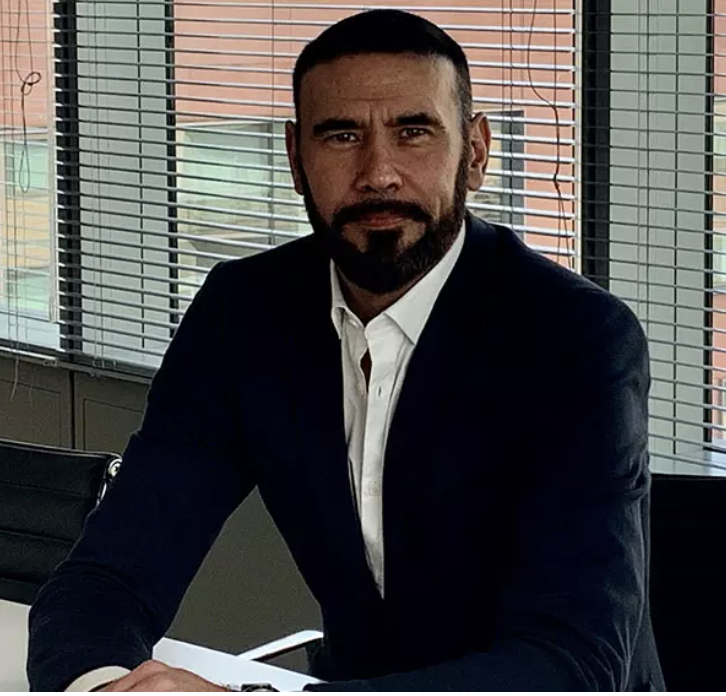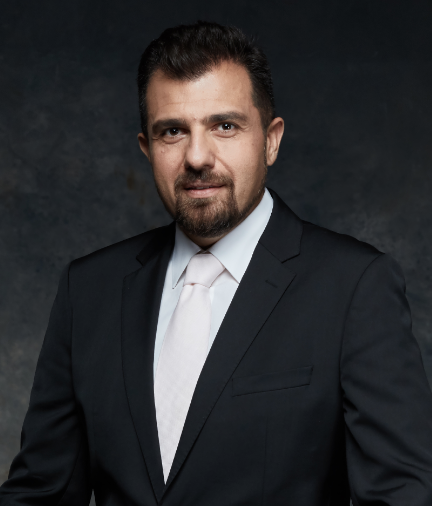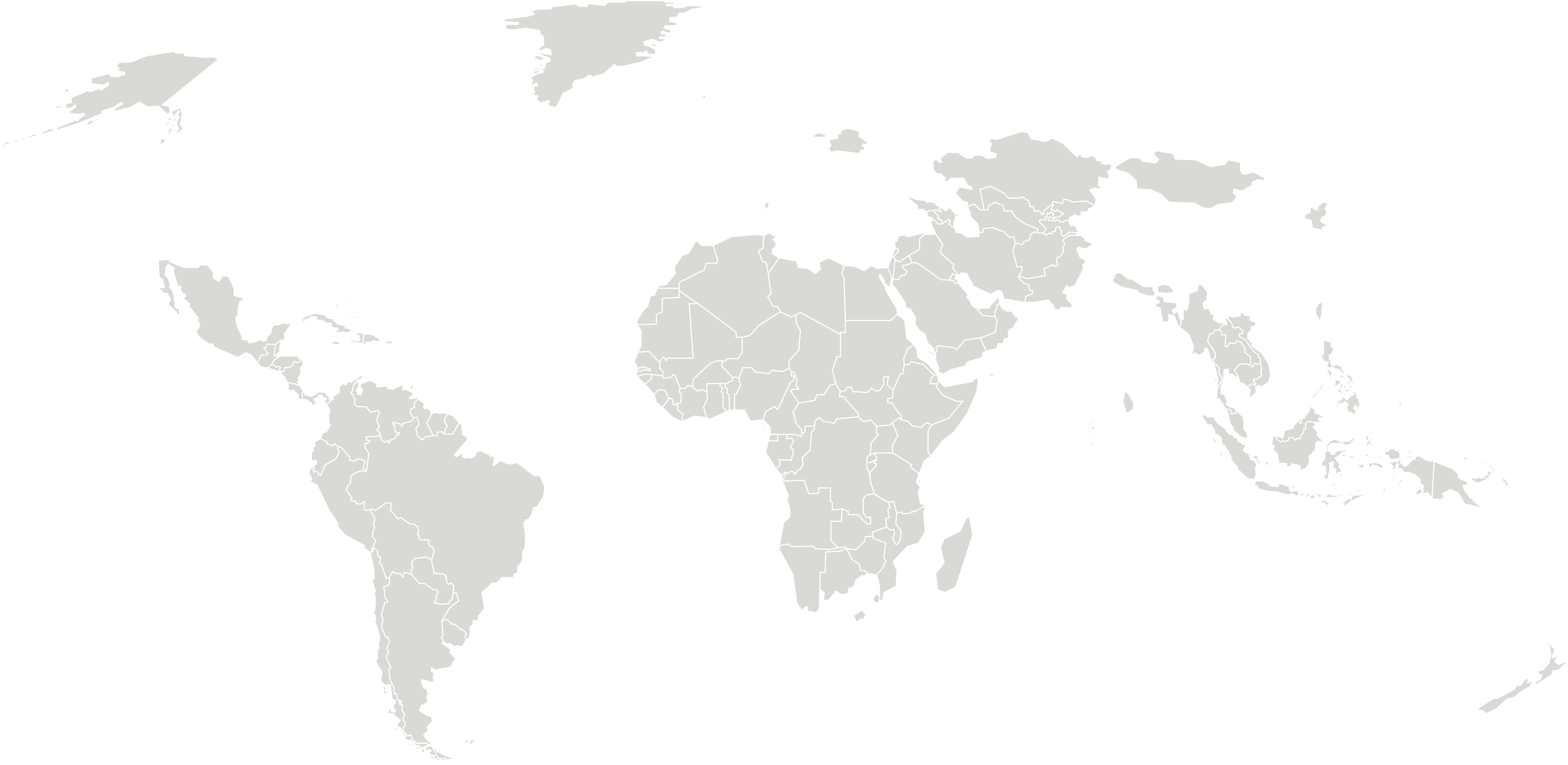


























Country Managing Partner
European governments are exploring ocean energy to boost supply security, but face competition from the United States, Canada, and China.
Canada's bioenergy generation potential is supported due to the country's abundant forest area of 94,921 square meters per capita, and cropland of 10,492 square meters per capita.�
T. 604 891 7243
E. dshugarman@wt.ca
Canada
Key contact:
USA
The US leads in CCUS deployment with 56 MT per year of operational capture capacity and an additional 245 MT per year under development. The country also has the highest sequestration capacity, with 26.5 GT of total storage capacity in depleted reservoirs.�For Electric Vehicles (EVs), the US has one of the highest motorisation rates in the world, at 908 vehicles per 1,000 people – but the EV market is accelerating.�
UK
Great Britain:
The UK's robust economic and power sector fundamentals serve as essential drivers in supporting off-grid solar PV generation. The UK is also among key markets for utility-scale wind generation due to favourable wind policies, targets, and incentives – particularly excelling in offshore wind capacity. The UK is expected to lead the European ocean energy market in the short-term, with the UK government allocating significant investment. For hydropower, the UK government committed to developing policies that facilitate investment in long duration energy storage, ensuring an adequate supply, also with projects in Scotland. To meet its energy goals, the UK government outlined plans to introduce up to 24 GW of new nuclear capacity by 2050. The UK is among top markets for CCUS, with US$25 billion funding commitment for projects in Wales and England over the next 20 years. The UK plans to create a comprehensive map of the North Sea's underground resources to establish itself as a global leader in CCUS.�
Jonathan Kirkwood
Partner, Edinburgh
M. +447707147842
E. Jonathan.Kirkwood@dwf.law
Ireland
Key contact:
Ireland is among the key markets for wind (utility-scale onshore and offshore) generation, due to favourable policies, targets and incentives – with 2027 targets in place. Additionally, Ireland's strong economic and energy sector fundamentals make it the ideal candidate for CCUS in Europe.
Chris Wheeler
Head of Energy – Ireland
T. +353 (0)86 466 9204
E. chris.wheeler2@dwf.law
Portugal
Key contact:
Portugal is a key European solar market with a favourable environment and targets for 2030 – aiming to achieve climate neutrality by 2045. However Portugal do not provide VAT and customs tax exemptions on importing solar technologies, nor had they implemented a ban on fossil fuel boilers in the residential sector. For hydropower generation, Portugal is progressing the Alto Tâmega project, encompassing the development of three power plants with a combined capacity of 1.1 GW.
Claudio Rodriguez Galan
Consultant
T. +351 911 975 512
E. claudio.rodriguez@dwf.law
Spain
Key contact:
Spain was among the top contributors to new solar capacities, whilst project developers face grid connection challenges – and is identified as a key European growth market with a favourable environment. Spain plans to increase its onshore wind capacity, becoming one of the largest European wind markets. For hydropower generation, despite having higher potential, Spain is ranked lower due to minimal capacity deployments compared to other regions. Whilst overall, Europe saw a y-o-y decline in nuclear generation, Spain saw a modest increase. Despite the 2020 Hydrogen Roadmap Strategy, green hydrogen capacity in Spain falls significantly short but has had recent project investment.�
Javier Olmos
Head of Energy – Spain
T. +34 93 503 48 68
E. javier.olmos@dwf-rcd.law
France
Key contact:
France leads in favourable conditions for utility-scale solar generation – the favourable environment for off-grid solar PV generation is driven by the significant increase in installed capacities. France is also excelling in offshore wind capacity. France ranks as Europe's second-largest holder of hydropower capacity, being a key growth and low risk market due to significant increase in renewable and pumped storage hydropower deployment over the last five years, and a national hydrogen program and 2030 target in place. France is the main market for ocean energy with the most conducive environment. Additionally France is a growth market for bioenergy, and has set targets to decrease nuclear energy by 2035.
New opportunities are arising for CCUS, and the region is a key European electric vehicle (EV) market.�
Anne-Sylvie Vassenaix-Paxton
Head of Energy – France
T. +33 (0)1 40 69 26 51
M. +33 (0)6 03 47 65 61
E. as.vassenaix-paxton@dwf.law
Germany
Key contact:
Germany was the top contributor to European solar capacities and increases y-o-y, with aims to achieve 100 GW solar capacity by 2030 – provided developers overcome challenges. Germany is Europe's largest market in onshore wind capacity, and a key market to watch for hydropower generation – with investment in 62 hydrogen projects under the Important Project of Common European Interest (IPCEI). Germany emerged as the largest producer of bioenergy. Germany is a key European electric vehicle (EV) market, fuelled by government incentives.
Oliver Bolthausen
Country Managing Partner (Germany)
T. +49 (0)89 2060 299 60
M. +49 (0)172 8518143
E. oliver.bolthausen@dwf.law
Poland
Key contact:
Poland has the most favourable environment for rooftop solar PV generation, having implemented net-metering, energy efficiency plans, energy performance standards for buildings, low-carbon heat targets, bans on fossil fuel boilers, and grants for heat pump purchases – despite limited solar resources compared to other regions.
For bioenergy generation European Union countries experienced a decline in recent years, Poland was among the regions to witness a reduction. Poland was one of the four European countries where the percentage of new EV registrations remained low.
Karol Lasocki
Head of Energy – Poland
T. +48 22 653 4219
M. +48 501 359 370
E. karol.lasocki@dwf.law
Turkey
Key contact:
Orkun Özkan
(OGB)
Partner
E. orkun.ozkan@ogb.law
India
Key contact:
Lorem ipsum dolor sit amet, consectetur adipiscing elit. Vestibulum semper diam mi, vitae fermentum lectus accumsan in. Vivamus rutrum lorem turpis, non elementum diam.
Dhruv Chhatralia BEM
Partner, Head of India Group
M. +44 7783 782972
E. dhruv.chhatralia@dwf.law
Hong Kong
Key contact:
Basil Hwang
(Hauzen)
Managing Partner
T. +852 2150 2988
E. basilhwang@hauzen.hk
South Africa
Key contact:
Stephen Thomson (Thomson Wilks)
Director
M. 011 784 8984
E. stephen@thomsonwilks.co.za
Singapore
Key contact:
Daniel Koh
(Eldan Law)
Founding Partner
D. +65 6837 8107
M. +65 9688 8320
E. danielkoh@eldanlaw.com
Qatar
Key contact:
Kirk Durrant
Managing Partner (Qatar)
T. +974 4012 7601
M. +974 3371 7199
E. kirk.durrant@dwf.law



































































































Daniel Shugarman (Whitelaw Twining)

Associated firm







Key contacts
Darren Walsh
Global Head of Energy
T. +44 (0)151 907 3206
M. +44 (0)7841 317 545
E. darren.walsh@dwf.law

Scotland:



Italy
Key contact:
Italy is a growth market for utility-scale wind generation due to favourable wind policies, targets, and incentives. Additionally new opportunities are arising in CCUS. However, despite having higher hydropower potential than other regions Italy ranked lower due to minimal capacity deployments. For bioenergy generation European Union countries experienced a decline in in recent years, Italy was among the regions to witness a reduction.��
Michele Cicchetti
Head of Energy – Italy
T. +39 02 3031 7999
E. michele.cicchetti@dwf.law





Australia
Key contacts
Australia has one of the highest solar generation potentials in the world, with average global horizontal irradiance ranging from 1,387 – 2,284 kWh / m2 annually. Similar to utility-scale and rooftop PV, Australia has the potential to generate a high amount of off-grid solar PV energy.
Australia's high demand for CCUS is evident in the country's CO2 emissions footprint of 15 MT per capita, and a fossil fuel production rate of 19.2 MT per capita.
Matt Dudakov
Principal Lawyer, �Managing Partner (Australia)
M. 0412 588 013
E. matt.dudakov@dwf.law
Hamish Broadbent
Principal Lawyer, �Managing Partner (Australia)
T. +61 (7) 3013 2708
E. hamish.broadbent@dwf.law



Associated firm

Associated firm

Associated firm

DWF locations
Additional locations in the report

Austria
Austria is a key market for hydropower generation due to significant increase in renewable and pumped storage hydropower deployment over the last five years. For solar generation, only Austria had a slightly higher growth rate than Italy among the European Union countries. However, Austria was among the four regions to witness the largest absolute reductions in bioenergy generation.�
Belgium
Belgium is expected to install 1.6 GW of new onshore, and 1 GW offshore wind capacity by 2027. It is a key growth market for nuclear generation in Europe with over 50 years of experience, with plans to triple current capacity by 2050 under COP 28. Belgium continues to lead in hydrogen infrastructure expansion in the short-term, as one of the most advanced nations due to their comprehensive plans, legislation, and ongoing construction of national hydrogen networks.�
Bulgaria
Bulgaria’s economic and power sector fundamentals are underpinned by a strong GDP growth and retail electricity prices, higher than EU average. Although Bulgaria’s National Recovery and Sustainability Plan stresses the need to open up the electricity market for more project implementation and investment – the plan sets up a national fund for decarbonisation and energy efficiency program. Discussions with Romania resumed on the construction of the hydropower project on the Danube River. Bulgaria also aims to triple their current nuclear capacity and new opportunities are arising for CCUS.�
Croatia
Run-of-river hydropower generation grew in Croatia due to heavier rainfall along the Danube. New opportunities are arising for CCUS.�
Republic of Cyprus
Cyprus were among the four European countries where the percentage of new EV registrations remained below 5% of the total fleet.�
Czechia
Czechia have plans to triple their current nuclear generation capacity by 2050, under the recent COP 28 development. Although were among the four European countries where the percentage of new EV registrations remained below 5% of the total fleet.�
Denmark
Denmark is a high-growth bioenergy market, focussing on waste-to-energy. However they were among the several countries, to witness the largest absolute reductions in bioenergy generation in recent years. Additionally, national support for CCUS projects is now possible under the revised Climate Energy and Environmental State Aid Guidelines, with Denmark offering noteworthy assistance.�
Estonia
Estonia stood out with the highest proportion of bioenergy in its generation mix, constituting 30%, and yielding a total output of 2.5 TWh. Despite European Union countries experiencing a 1.6% y-o-y decline in bioenergy generation in recent years – Estonia saw a notable increase of 41% y-o-y.�
Finland
Finland has led in onshore wind capacity. It's a high-growth bioenergy market, focussing on waste-to-energy – higher generation levels in Finland offset an even larger reduction across the European Union. Finland is one of the top-performing, low-risk, and high-growth markets for EVs – with clear EV targets, loans and grants schemes for purchases, VAT exemptions, and a fuel economy standard. Finland has the third highest percentage sales, at 20%.
Greece
In 2023, hydropower generation was expected to increase, but will be 9% lower than the 10-year European average as drought conditions in key markets including Greece persisted during the past winter. Although Greece boasts one of the highest renewable energy generation potentials in Europe, and new opportunities are arising in CCUS.
Lithuania
Although, Lithuania is a relatively riskier market for utility-scale wind generation, it boasts one of the most favourable conditions for this technology, with a wind resource surpassing that of Finland and Denmark.
Netherlands
In Europe for wind generation the Netherlands topped the installed PV capacity per capita. Although it was among the several countries to witness the largest absolute reductions in bioenergy generation. However for nuclear generation, the Netherlands observed a 9% y-o-y increase – although relatively modest, they were the highest in Europe. The Netherlands continue to lead in hydrogen infrastructure expansion – as one of the most advanced nations due to comprehensive plans, legislation, and ongoing construction of national hydrogen networks. Additionally, national support for CCUS projects is now possible under the revised Climate Energy and Environmental State Aid Guidelines, with the Netherlands offering noteworthy assistance.
Romania
Run-of-river hydropower generation grew in Romania due to heavier rainfall along the Danube. Romania announced discussions will resume with Bulgaria on the construction of the hydropower project on the Danube River – the project is expected to be commissioned by 2030.
New opportunities are arising in CCUS.
Slovakia
Slovakia is a key growth market for nuclear generation in Europe with 50 years of experience – supported by its high nuclear capacity of 2 GW, which is projected to triple by 2050 under the recent COP 28 development. However it was among the four European countries where the percentage of new EV registrations remained below 5% of the total fleet.
Slovenia
Run-of-river hydropower generation grew in Slovenia due to heavier rainfall along the Danube.
Sweden
Sweden led in onshore wind capacity, although despite higher wind resources it's a riskier market compared to the UK and France, due to higher contracted tariffs at utility-scale wind projects. Sweden is a high-growth, low-risk bioenergy market – with biogas capacities increasing by 119% per year 2018-2022, although was among the several countries to witness the largest absolute reductions in bioenergy generation in recent years. Sweden plan to triple their current nuclear capacity under the COP 28 announcement. In 2021, the Energy Agency of Sweden introduced a proposal for a national strategy to achieve a fossil-free hydrogen sector. Sweden had one of the highest shares observed for EVs.
Switzerland
Switzerland’s hydropower generation potential is boosted by the country’s elevation-precipitation gradient of 6.8 million millimetres / metre (4.8 million millimetres / metre higher than the European average).
Norway
Norway, despite higher wind resources, is a riskier market compared to the UK and France, due to higher contracted tariffs at utility-scale wind projects. Norway is a key market to watch for hydropower generation due to significant increases in renewable and pumped storage hydropower deployment, it boasts the largest European hydropower capacity. Additionally, Norway is a top market for CCUS in Europe – a primary focus is the Longship CCUS project. Norway had the highest share for EVs.
Iceland
Iceland has one of the highest shares observed for EVs.
South Korea
South Korea’s experience with ocean energy generation is supported by the country having one of the highest installed capacities at 256 MW.
Ukraine
In 2022, European electricity generation used ~13.5 BCM more gas than usual because of the low hydropower output – which exacerbated already high electricity prices in the region due to the reduced gas supply caused by the war in Ukraine, and the nuclear plant outages in France. Some large hydropower operators in Europe incurred financial losses as they had to buy back electricity at higher prices to fulfil their electricity delivery contracts.


China
China's favourable environment for ocean energy generation is driven by a significant increase in ocean energy capacities growing by 2% per year over the last five years – supported by a 3% per year increase in hydropower capacity, and a remarkable 46% per year increase in offshore wind capacity over the same period.
Albania
Download our full report to learn more.
Bosnia and Herzegovina
Download our full report to learn more.
North Macedonia
Download our full report to learn more.
Download our full report to learn more.
Moldova
Download our full report to learn more.
Serbia
Download our full report to learn more.
Japan
Download our full report to learn more.
Hungary
Download our full report to learn more.
Latvia
Download our full report to learn more.
Russia


Australia
Canada
France
Germany
Hong Kong
Ireland
India
Italy
Poland
Portugal
Qatar
Singapore
South Africa
Spain
Turkey
UK
USA
DWF locations
Albania
Austria
Belgium
Bosnia and Herzegovina
Bulgaria
China
Croatia
Republic of Cyprus
Czechia
Denmark
Estonia
Finland
Greece
Hungary
Iceland
Japan
Latvia
Lithuania
Moldova
Netherlands
North Macedonia
Norway
Romania
Russia
Serbia
Slovakia
Slovenia
South Korea
Sweden
Switzerland
Ukraine
Back to top

Additional locations in the report
